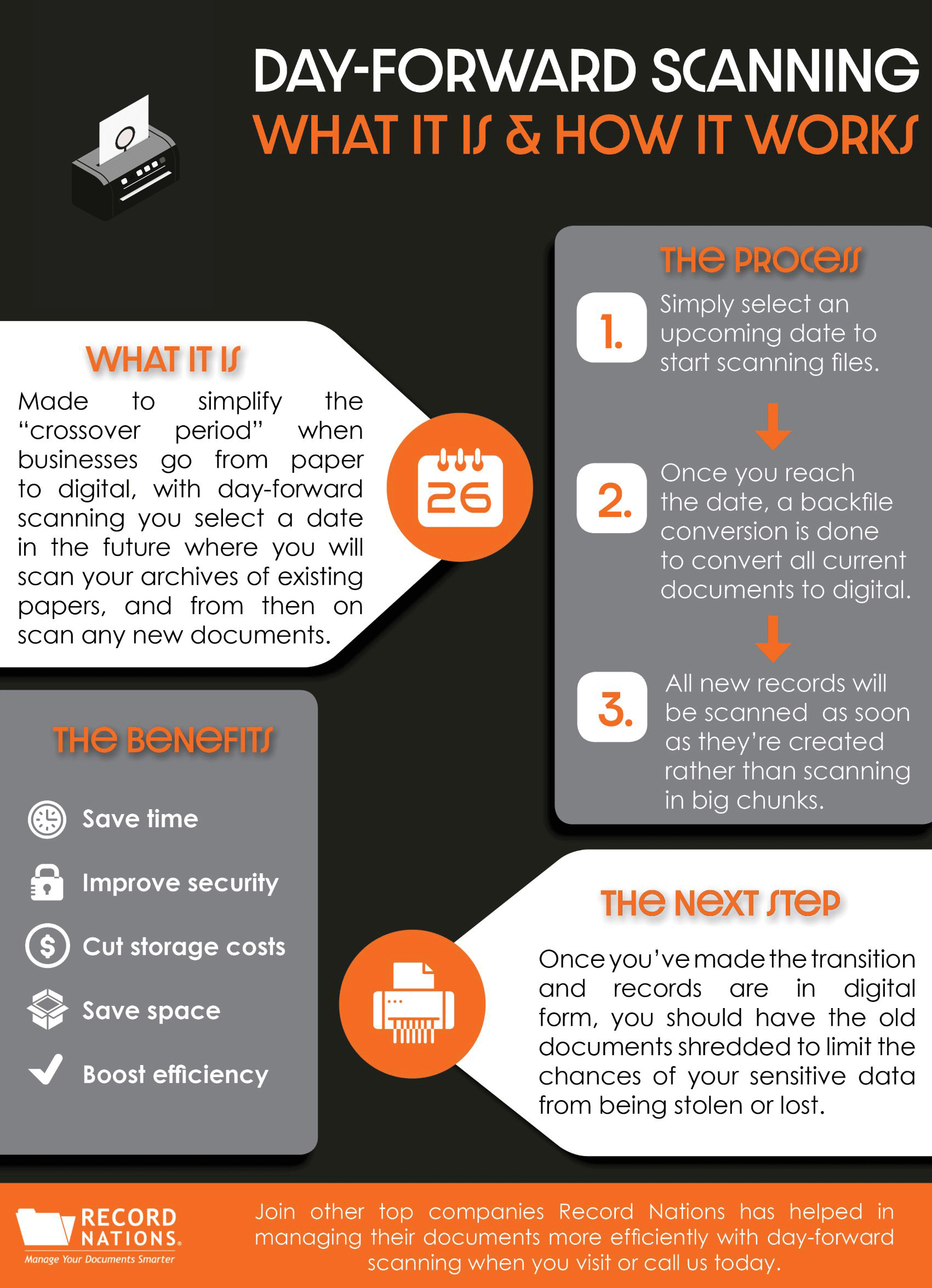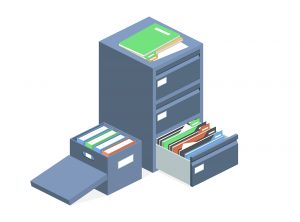
Made to simplify the “crossover period” when businesses go from paper to digital, with day-forward scanning you select a date in the future when you will first scan your archives of existing papers. From then on, your new documents will be scanned as soon as they’re created.
How to Implement Day-Forward Scanning
The overall goal of scanning is to make the transition from paper to digital. While there’s a range of different ways to do it, day-forward scanning is the answer.
All it takes is picking a date, scanning the old papers you have now, and scanning new ones as they come in.
The Day-Forward Scanning Process
- Select an upcoming date to start scanning files.
- Once you reach the set date, an initial backfile conversion is conducted to convert all current paper documents to digital formats.
- From that point on, all new records will be scanned and smoothly implemented as soon as they’re created rather than being scanned in large chunks.
What to Do With Paper Copies After They’re Scanned
Once the records are in digital form, you should have the old paper copies shredded. This will help limit the chances of your sensitive information being lost or stolen.
In many cases, a scanning provider will also have an industrial shredder at their scanning facility. If not, they will partner with a secure shredding provider to handle old records.
The Benefits of Day-Forward Scanning
With day-forward scanning, a business can make its files accessible for every employee while cutting the cost and time required to organize large-scale scanning projects or store and locate paper documents.
Saving Time While Boosting Efficiency
It doesn’t matter whether it’s 10,000 or 100,000 records. Either way, it will take a good deal of time to get them all scanned and indexed. This is where day-forward services come into the picture.
When you scan records regularly and in small pieces, employees won’t need to pause while a document is waiting to be scanned during a large project.
On top of that, the speed at which they can be found, shared, and copied will greatly boost efficiency.
Cutting the Costs of Records Management
By scanning records as soon as they’re created, you immediately cut off the need for the costs and resources required to manage paper records. Among others, these costs include:
- Someone to manage the files
- Somewhere to store files
- Paper copying costs
- The time to find and refile
- File storage supplies (filing cabinets, etc.)
Improving Records Security
One of the greatest benefits of digital records management is the improved security. This includes encryption systems, firewalls, and password protections.
When you take your paper records and immediately implement them with a DMS or cloud storage system, you can take advantage of the boosted security and avoid the risks of paper records management entirely.
Saving Office Space
Since documents are scanned immediately with day-forward scanning, there’s no way for paperwork to ever accumulate—in turn keeping the office consistently clear.
Additionally, extra space that permanently opens can instead be used for more valuable purposes. For example, more revenue-generating employees.
Interested In Implementing A Day-Forward Scanning System?
Record Nations partners with secure and reliable scanning providers across the nation. To start, fill out our form, give us a call at (866) 385-3706, or use our live chat for a free, no-obligation quote from providers near you.














